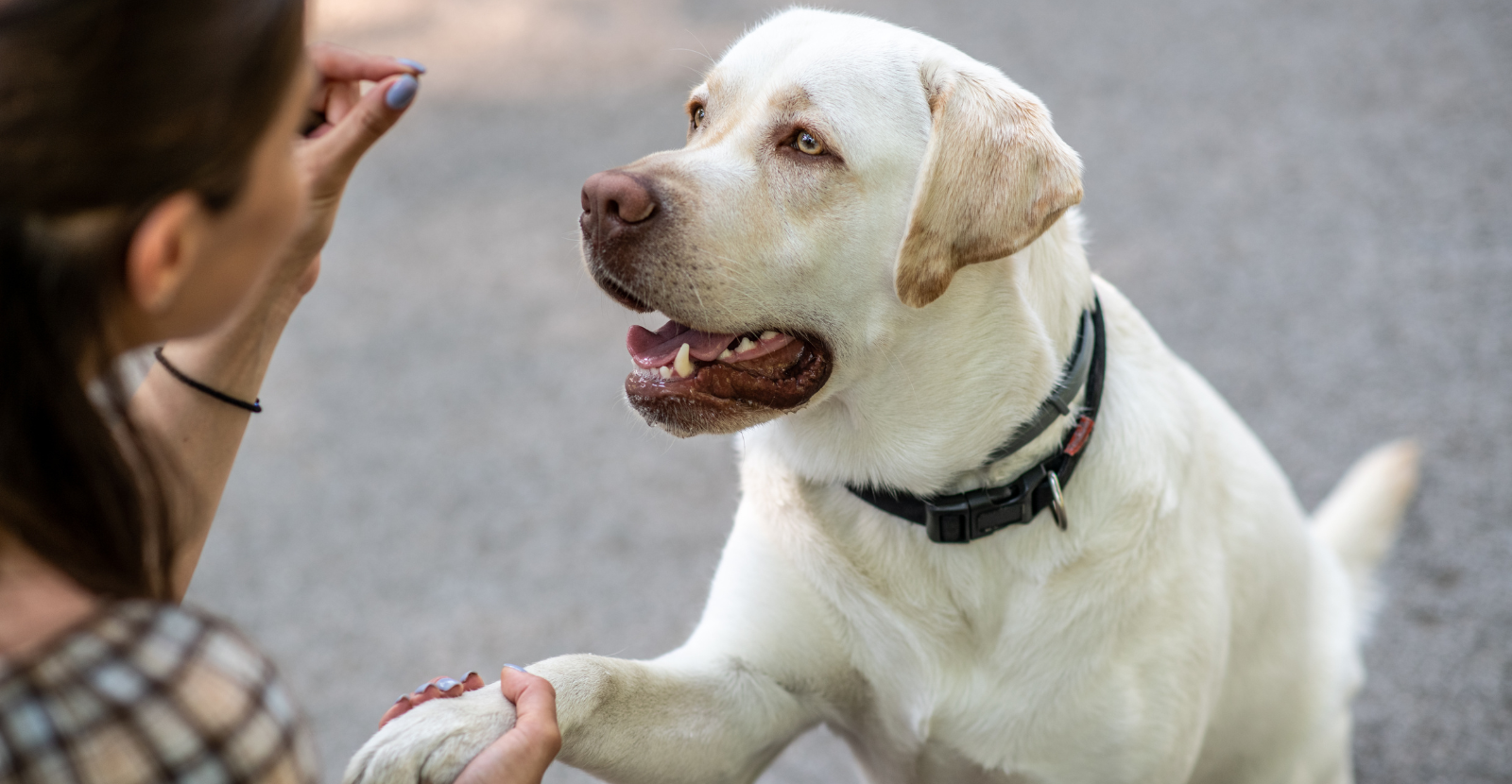For many dogs, a visit to the veterinarian can be a stressful and frightening experience. Whether it's a routine checkup or an emergency visit, dogs may become anxious, scared, or even aggressive when taken to the veterinarian's office. However, there are several things a pet parent can do to make the vet less nervous for their furry friends.
.png?width=1600&height=830&name=Vet%20VIsit%20(1).png)
Regular Checkups
Regular checkups are an essential part of keeping your dog healthy and happy. However, many pups may not enjoy the experience of visiting the vet's office. To help reduce your dog's anxiety during a routine visit, consider these desensitization tips:
- Familiarize Your Dog with the Vet's Office: Take your pups to the vet's office before the appointment to acquaint them with the environment. This can help your dog feel more comfortable and less anxious during the visit.
- Bring Treats and Toys: Bring your pet's favorite treats and toys to distract them during the checkup. Because of this small gesture, your dog will associate positive experiences with going to the vet.
- Practice Handling Your Dog: Practice handling your dog at home, such as touching their paws, ears, and mouth. This will prepare your furry friend for the vet's exam, and make it less stressful for both you and your dog.
- Use Positive Reinforcement: Use positive reinforcement techniques, such as treats or praise, to reward your dog for good behavior during the checkup. So your pet will feel more relaxed and comfortable.
- Start Early: If you have a new puppy, it's a good idea to start taking them to the vet as early as possible. This can help your little friend get used to the experience, and reduce their anxiety during future visits.
- Practice Car Rides: Many dogs can become anxious during car rides, which can make the trip to the vet's office more stressful. To help reduce your dog's worry, practice taking them on short car rides to familiar places, such as a park or a friend's house.
- Use Calming Aids: Several over-the-counter calming aids can help reduce your dog's fear during a checkup. These include pheromone sprays, calming collars, and supplements.
- Bring a Friend: If possible, bring a friend or family member with you to the vet's office. This can help provide additional support and comfort for your dog during the visit.
It's also important for pet parents to be aware of the signs of anxiety and fear in dogs. Some common signs include panting, shaking, hiding, whining, and pacing. If your dog exhibits this way during a vet visit, it's needed to address their anxiety and provide comfort and support. In this situation, choose a veterinarian who is experienced in working with worried or fearful dogs. Look for a vet who uses low-stress handling techniques, and who is willing to take the time to make your dog feel comfortable and safe.
Plan Ahead for Emergency Vet Visits
Emergency vet visits can be especially stressful for dogs and their owners. However, there are several things you can do to make this time much easier:
- Stay Calm: Dogs can sense when their pet parents are anxious or upset. To help your pup feel more at ease, try to stay calm and relaxed during the emergency vet visit.
- Bring Familiar Items: Bring familiar items from home, such as your dog's bed, blanket, or toys. These things will provide a sense of comfort and security for your pet.
- Keep Your Dog Restrained: If your dog is worried or scared, it's important to keep them restrained during the vet visit. This can help prevent your pup from becoming aggressive or causing harm to themselves or others.
- Be Prepared for Treatment: If your furry friend requires treatment, such as medication or surgery, be prepared to follow the vet's instructions carefully. This can help ensure that your dog receives the best vet care and that they recover quickly and safely. As recovery could be really expensive, it's better to have pet insurance to cover all the urgent pet care bills.
- Know the Signs of a Medical Emergency: It is essential for the pet parent to know the signs of a medical emergency in dogs, such as difficulty breathing, seizures, or severe bleeding. If you suspect that your pup is experiencing a medical emergency, seek veterinary care immediately.
- Be Patient: During an emergency vet visit, it is necessary to be patient with your dog. They may be in pain or discomfort, and may not be able to understand what's happening. Speak to them in a calm and reassuring tone, and try to provide comfort in any possible way.
Going to the veterinarian can be a stressful experience for dogs and their owners. However, by taking some of steps to reduce your dog's anxiety, you can help make regular checkups less scary for them. During emergency vet visits, it's important to stay calm, be prepared, and provide comfort and support for your dog. If your pup exhibits signs of anxiety or fear during a vet visit, it's necessary to address their trouble and seek additional help.
By working with your veterinarian and taking steps to reduce your dog's anxiety, you can help ensure that your pet receives the best possible care, while also minimizing their stress and fear.
Special thanks to our guest writer, Valeria Litovchenko. She's a writer for Petcube.com.












